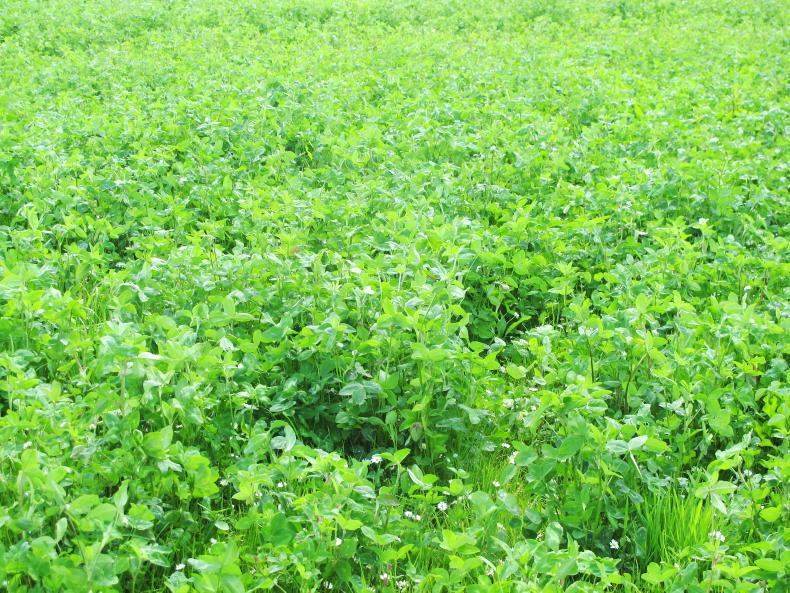All main-crop silage is now thankfully harvested, slurry is spread and I think whatever fertiliser I’m going to spread has been spread.
I would really love to get one last application out just to build a nice cover for the autumn and early winter, but, at current prices, I just don’t think I’m going to. Hopefully it's not a decision that I’ll regret later.
I say all main-crop silage is harvested because I’m going to take another light crop off my red clover sward.
I took a light crop of silage off it five weeks ago and it’s unbelievable how it has bounced back since.
I got around five bales to the acre in the first cut - that was after being wilted for 48 hours.
Impressed
As I didn’t have a lot of slurry left and this field is away from the yard, all it got since the last cut is two bags of 0:7:30 per acre.
I haven’t a huge amount of experience in growing clover, but I have to say I’m very impressed with the way it's growing at the minute.
This is very much an experiment and I’m still sitting very much on the fence with regard to my clover opinion.
I haven’t spread any nitrogen, but a reasonable level of P and K is needed and, also, there is the extra cost associated with extra mowing and raking.
Cutting at shorter intervals throughout the year is recommended
A clover sward is obviously continuously fixing nitrogen from the atmosphere, so unlike a normal silage sward, you can’t wait for the nitrogen to go out of it before you cut it, as there is always going to be nitrogen present.
To counteract this, a good wilt is needed, approximately twice the length of time a normal grass sward needs.
Obviously, the lighter the crop the easier it is to wilt, so cutting at shorter intervals throughout the year is recommended. But of, course, shorter intervals mean more cuts, which means a bigger mowing and raking bill.
Persistence
Persistence is another issue. How long will the red clover last? Four to six years I’m told, with good management, and then it will die out. Of
course, I’ll still be left with a good perennial rye grass and white clover sward. What will the quality of the silage be like is another question?
A question I’m getting mixed answers to, depending on what farmer I talk to. Some farmers who have grown it think it’s a nice higher-protein silage that can be fed to weanling or lactating animals as a complement to ordinary grass silage.
Other farmers I’ve asked don’t rate it and prefer grass-only silage.
I suppose a lot of that will depend on the conditions under which it was ensiled. The best way to know is to find out for myself - I’ll keep you all informed.






 This is a subscriber-only article
This is a subscriber-only article











SHARING OPTIONS: